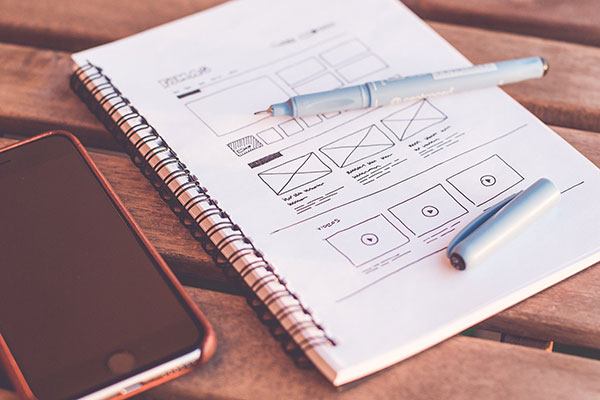
6 dos and don'ts when designing a website for your business
Do you know that 38% of users will not go over a site if it is not aesthetically appealing? Sure, some poeple won’t notice these things but those who do care do pay attention to design and clarity – these are the types of people who look for quality.
Your site design is an important investment that can potentially attract a lot of of revenue as well as build the brand and reputation for your business. If you have not updated your site in a while, you can potentially hurt your business by putting people off before they even start learning more about you.
In the following guest post by Kenneth Sytian, we have put together the six “dos and don’ts” when it comes to designing your business website:
Dos
Create a focalpoint
Where do site visitors go exactly? As a professional, your perspective might be quite different from that of the average web user.
For instance, an e-commerce site will encourage visitors to make a purchase, while a SaaS site might drive them for a free trial. Whatever your website’s purpose is, you have to make it a focal point of your homepage.
Use color combos
Your website colors should reflect your brand values and messaging, go along with your content, and visually delight your viewers.
Do not just pick random colors because it is the color that you like. Think about what your brand represents, as well as its users.
If you only have basic colors and you do not know how to come up with color schemes, use an automatic color generator to come up with a color that is right for your business.
Make it responsive
More than half of the global internet traffic comes from mobile. It means people can visit your site using various devices, such as their smartphones, tablets, laptops, or even a watch.
There are also other things that you should keep in mind:
- Make your information easy to find: Unlike desktop users, when mobile users are browsing something on their devices, they are searching for something in particular such as the contact information and product costs. Make sure that this information is not easy to miss.
- Use interactive elements according to the screen: Mobile users are scrolling or tapping through their fingers, so you might have to increase the size of your website’s interactive elements such as your clickable buttons.
Make use of high-quality content
Approximately 95 percent of information online is through written language. So, even if you have a site that is designed with excellence, it is just an empty frame without high-quality content.
A website that stands out has great design and great content. It is your job to ensure that your design goes well with your content.
- Ensure that the text on your website is relevant: Irrelevant text easily confuses your visitors. Focus on creating something valuable for your visitors.
- Stay away from jargon: The information that you have written on your site should be simple and plain as possible. Write for all levels of readers, and pick words that everybody can easily understand.
Make it user-friendly
Your visitors have limited attention spans. If your important information is buried deep within your site, it will only frustrate them and cause them to leave.
To make your audience happy, make your site easy to navigate. Place a menu bar, utilize readable fonts, avoid busy backgrounds, and place the facts upfront. Always test for site usability.
Optimize your site
Search engine optimization or SEO is vital if you want your website to thrive. You can specifically incorporate the keywords in the title, the links in web pages, as well as the section headers.
Apart from search engines, you also have to take into consideration your human visitors. Create content that gives your audience value, rather than for the sake of search engines.
Dont’s
Cluttered layout
Have you ever come across a site that has rows and rows of boxes, all in various sizes, and arranged in a disorganized manner?
Would you spend seconds staying on the site sorting through the mess? Well, of course not!
Cluttered websites are visually confusing, and your audience would not know where they need to focus their attention.
Hijack Scrolling
This usually occurs when a web designer manipulates a scroll bar in a way where it behaves differently.
By using scroll points that are fixed, animated effects, and a scroll-bar redesign, it takes away the control from the user. As a result, it turns users off.
Ideally, you want them to have complete control over their browsing activity and their movement through your website.
Blinking text and ads
Do not go overboard with content that flickers and flashes. It is annoying and might also trigger seizures from people that are susceptible to it.
Too many colors
Using too many colors will make various elements in your web design clash. Colors are also known to have a strong psychological impact as to how people perceive your brand.
A good rule of thumb is not to use more than three colors. If you are working your way with palettes, then you might have to use more, just make sure that you balance them well.
Too many clicks to get to where you need to go
Ideally, everything on your site should be easily searchable. Visitors do not want to spend at least a few seconds finding things. To make it easier for them, place a search box.
Making your page an image
Texts on your site should stay as it is. You do not have to make the text blocks on your website as JPG images.
Apart from that, if you have a website background that has 1MB or more, you will have a slow-loading site.
Final thoughts
In the process of creating your website, there are specific things that you have to be aware of. For instance, if users interact with your site, they expect only the best user experience.
If you do not satisfy that need, they will simply move on to your competitors, which in some cases are only a click away.
That’s why, in every design decision that you have to make, you need to think of what is best for your visitor’s needs and try to make the entire experience as pleasant as possible.


